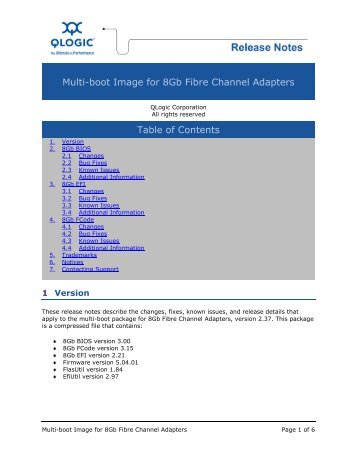
Qla2300 Driver For Mac Download
There are two different USB drivers available for the Mac:. ▪ VCP, or Virtual COM Port. When installed, the driver makes macOS think that your Mac has a real serial port. This enables a wide range of software to work since a lot of it was written to support serial ports. Timing resolution is estimated to be about 5-6 milliseconds. ▪ D2xx: This driver is specific to the USB interface chips (made by FTDI) that are found in our response pads and in StimTracker.
But it offers much improved timing: a fixed 2 millisecond delay with zero milliseconds jitter.
VMware ESX Server 3.5 Driver CD for QLogic Fibre Channel Adapters This driver CD release includes support for version 7.09-vm6 of the qla2300707vmw driver on ESX Server 3.5. The qla2300707vmw driver supports products based on QLogic Fibre Channel HBAs (2Gb, 4Gb, and 8Gb). For detailed information about ESX Server hardware support, see the Driver CD for VMware ESX Server 3.5 Update 4 Driver version: 7.09-vm6 2009-07-01 Build: 161377 Filename: esx350-qla2300-v707vmw-7.9.6-161377.iso Md5Sum: 05d33dbca5ad94ebfb4b2e Sha1Sum: 8d73cde902df6f5ccd6a2a141ba5e2a541250dba.
Caution: After installing this driver, exercise caution when upgrading ESX Server or applying patches. ISO File This document contains the following sections:. Creating the Driver CD. Download the driver file. Check the md5sum of the downloaded file by running the following command: md5sum esx350-qla2300-v707vmw-7.9.6-161377.iso The output should match the following: 05d33dbca5ad94ebfb4b2e esx350-qla2300-v707vmw-7.9.6-161377.iso See (KB 1537) for more information.
Write the.iso image to a CD-ROM. To install ESX Server, refer the procedure detailed in the following section.
Using the Driver CD The ESX Server driver CD allows you to install new or updated drivers on new or existing ESX Server installations. You can use the driver CD in two different ways:. As a boot CD for new ESX Server installations. As a driver update CD for existing ESX Server installations. Driver CD as a Boot CD Only The following procedure describes how to use the driver CD as a boot CD. Use this CD as a boot CD only when the new driver must enable the target device on which ESX Server 3.5 Update 3 will be installed. Place the driver CD in the CD-ROM drive of the host machine.
Start the host machine. When prompted for an upgrade or installation, press Enter for graphical mode. Choose the language you prefer. Select a keyboard type. After you are prompted to swap the driver CD with the ESX Server installation CD, insert the ESX Server 3.5 Update 3 installation CD and continue with ESX Server installation.
Bartender and Cook are Awesome. Great owners as well. Fish sebade avalon. (Carbondale, IL) Don Taco makes a fine taco.
For detailed instructions, refer to the. After ESX Server is installed and the system reboots, log in to ESX Server. Verify that the driver is installed successfully:.
Run the esxupdate query command. A message containing the information about the driver, appears. View the PCI ID XML file in the /etc/vmware/pciid/ directory. The driver information is available in the file. Check for the latest version of the driver module in the following directory: /usr/lib/vmware/vmkmod/. To verify that the driver is loaded and functioning, enter vmkloadmod -l command.
The driver is listed in the displayed list. Driver CD as an Update CD Only The following procedure describes how to use the driver CD to update or add the driver on an existing ESX Server 3.5 system (for more information, refer to the Tech Note). Start the ESX Server machine and log in to service console as root. Place the driver CD in the CD-ROM drive of the server. Mount the driver CD. Change the directory to the VMupdates/RPMS/ on the driver CD. Run the esxupdate update command.
Note: If the hardware is not already installed on the system, run the esxupdate command with the -noreboot option, shut down the host machine manually, install the hardware, and then boot the host machine. This allows you to install in a single boot. The server reboots after the driver update. Remove the driver CD from the CD-ROM drive before the system reboots. After the system reboots, log in to ESX Server.
Verify that the driver is installed successfully:. Run the esxupdate query command and verify that the information about the driver is mentioned in the resulting message. View the PCI ID XML file in the /etc/vmware/pciid/ directory. The driver information is available in the file. Check for the latest version of the driver module in /usr/lib/vmware/vmkmod/.
To verify that the driver is loaded and functioning, run the vmkloadmod -l command. The driver is listed in the displayed list.